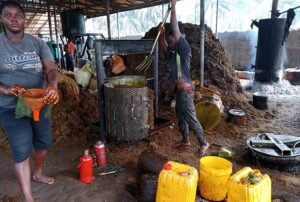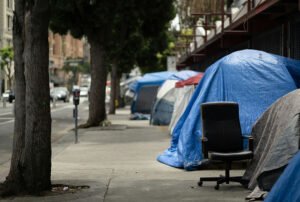
Climate change is no longer a future concern; we’re seeing its effects all around us today. Less visible are the financial impacts of the climate crisis—but they too are significant, and intensifying. Individuals, communities, and organizations need to prepare for this escalating financial burden.
The first place that most of us will experience the direct costs of climate change is in the insurance market, and the problem has already emerged.
“Loading the Dice”
In many areas, property insurance premiums have soared, and finding coverage has become extremely difficult. Several factors contribute to this, including regulation, inflation, and migration patterns, as more of us move away from disaster-prone areas.
The most concerning factor, however, is the increase in the frequency and ferocity of natural disasters.
Climate change, caused primarily by human activity, is driving temperatures up around the world, causing cascading impacts across natural systems. This creates other perils like drought, flooding, wildfires, sea-level rise, and more powerful hurricanes and storms.
Places deemed “safer” from climate change, like the US heartland, are also experiencing higher insurance payouts because of “secondary perils.”
While not every disaster is attributable to climate change, scientists say global heating is “loading the dice,” making natural disasters more powerful and frequent. Attribution science—which assesses the relative role of climate change in disasters versus natural weather patterns and climate variability—shows climate change made over 70 percent of recent extreme weather events more likely or more severe.
All of these events threaten our lives, homes, businesses, and communities—and when they strike, require higher insurance payouts. US insurance companies are already feeling the effects and struggling to stay profitable. According to a New York Times study, companies lost money on property insurance in 18 states in 2023. To maintain profitability, insurance companies are raising premiums and curtailing coverage for their customers.
Premiums are also impacted by catastrophes that happen across the globe. For example, if reinsurance companies that backstop US insurance companies raise prices to cover payouts for severe drought in Europe, those increases can be passed along to policyholders worldwide. And global damages are escalating, hitting over $100 billion for the past four consecutive years.
No Place Is Safe
Places deemed “safer” from climate change, like the US heartland, are also experiencing higher insurance payouts because of “secondary perils” like damaging thunderstorms, extreme rainfall, hail, and tornadoes. Insurers report they pay out more for these events in aggregate than the grand-scale ones like hurricanes and earthquakes.
Sign up for our free newsletters
Subscribe to NPQ's newsletters to have our top stories delivered directly to your inbox.
By signing up, you agree to our privacy policy and terms of use, and to receive messages from NPQ and our partners.
While stronger thunderstorms and torrential rains are clearly tied to climate change, our understanding of how hail and tornadoes are related to climate change is less certain, in part because historical data are limited. But their patterns are changing; tornadoes are happening more often in clusters and are moving from “Tornado Alley” in the central United States to heavily populated areas toward the east. Hailstones are getting bigger and more damaging. Scientists are studying these changes; meanwhile, insurers are leaving the market.
Donors and governments may shift their dollars…to focusing on necessities like food, water, energy, and healthcare.
This escalation is our new normal. Unless we act aggressively to curb emissions, climate change will continue to put pressure on our insurance system and society at large. It will get hotter, storm surges will get higher, droughts will intensify, and wildfires will become more widespread. And more disasters will strike areas that historically have been deemed safe.
For example, oceans are now so hot that hurricanes can form and maintain their strength further from the equator, which means more powerful hurricanes could hit areas that are unaccustomed to such storms and ill-prepared. Hurricanes intensify more quickly now, which gives communities less time to get ready, and wind speeds are only getting higher. Some scientists are calling for the Saffir-Simpson Hurricane Wind Scale to be expanded to include a Category 6 level—beyond the Category 5 level of 157 miles per hour or higher—because storms are now registering winds of 192 miles per hour or above.
Pressures on Civil Society
Financial experts warn of cascading impacts. While the insurance market is the canary in the coal mine, additional financial pressures are coming close behind.
Without insurance, people cannot get mortgages. Without access to mortgages, there will be fewer potential homebuyers, which may lead to a drop in property values. Lower property values may diminish municipal tax bases at a time when climate action to strengthen infrastructure and resilience is even more necessary and extensive. This could lead to drops in municipal bond ratings, as municipal coffers empty out, spreading the financial pain to other investments.
Nonprofits may face additional pressures such as less funding and higher operating costs. Donors and governments may shift their dollars to focus on necessities like food, water, energy, and healthcare. It may be harder for nonprofits to provide services, especially as people’s ability to work is affected by higher temperatures, or natural disasters degrade infrastructure and damage transportation and communications systems. Offices and supply depots can be disrupted by increased storm activity as well, and clients and staff may not be able to access services or products.
As individuals, companies, organizations, and society at large, we need to start factoring this disruption into our planning and hardening our systems. We can lower the threats if we pivot more aggressively toward a low-carbon economy. In the meantime, we must accept that our tomorrows will be different from our yesterdays—and the sooner we begin to plan for that, the better the outcome will be.









